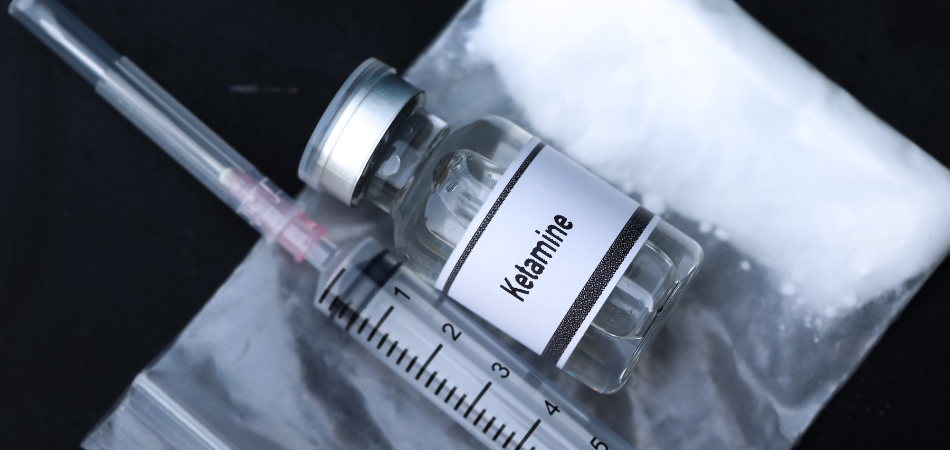This Page was last reviewed and changed on June 13th, 2024
In 2023, 2,211 people in England started treatment for ketamine addiction. This is a large increase from 2021 when 1,551 started ketamine addiction treatment. ‘Special K’ has been linked to party culture for some years now and is known for its dual dissociative and hallucinogenic effects. Compared to some substances, the addiction potential of ketamine is perhaps less discussed. This means that some more obscure symptoms of ketamine addiction, such as ketamine bladder syndrome, maybe less known. With an increase in ketamine use due to the relative affordability and access to the substance, it is becoming more important to discuss the potential health effects of ketamine abuse, including its longer-term impact on the bladder.
What is ketamine bladder syndrome?
Ketamine bladder syndrome (KBS) occurs when ‘serious and frequently irreversible damage to the urinary tract’ occurs as a result of recreational ketamine use. In some cases, KBS can lead to the need for reconstructive surgery.
Ketamine bladder syndrome can also be known by a range of different names, including:
- Ketamine-associated cystitis
- Ketamine-associated urinary tract pathology
- Ketamine uropathy
- K bladder
Signs and Symptoms
- a small, painful bladder
- needing to use the toilet very frequently
- not feeling like you have evacuated your bladder fully
- incontinence (difficulty holding urine)
- blood in the urine
- pain in your lower stomach, abdomen and lower back
- upper urinary tract obstruction
- papillary necrosis (when parts of the kidney die)
What causes ketamine bladder syndrome?
Currently, clinicians are not certain why addiction to ketamine can lead to the development of ketamine bladder syndrome. The main theory is that regular use of ketamine inflamed the lining of the bladder, causing discomfort and swelling. Researchers have been able to identify that regular ketamine use can ‘increase the risk of cystitis by 3- to 4-fold,’ which can then lead to the development of KBS.
Whilst clinicians are still debating why ketamine has such a significant effect on the bladder, we know that many substances cause complications in the renal system. The renal system is made up of the kidney, ureters and the urethra. The role of this system is to filter out fluid. The filtering process aims to remove toxins, waste products and excess products that the body does not need. We know that the renal system filters out metabolites. Metabolites are the compounds left over after substances in our body have been broken down. For example, ketamine will have its own set of metabolites.
If the renal system has to deal with too much of a toxic substance – such as ketamine – it can risk becoming damaged. When we drink alcohol or take drugs, then our renal systems have to filter these substances out so they do not stay in our bodies. If we continue to use a substance regularly – as would be the case with an addiction to ketamine –then our renal systems can become damaged. Damage to our renal systems can be very dangerous and can lead to kidney injury. When this happens, you may experience:
- nausea or sickness
- diarrhoea
- dehydration
- retention of urine
- feeling confused
- feeling drowsy
- feeling dizzy
This can then upset the functioning of the body beyond the renal system. It can alter our body’s ability to filter substances, change the way that different drugs and medications affect us and also exacerbate existing physical health conditions.
Screening for ketamine bladder syndrome
It can be hard to identify when an issue with the bladder is ketamine bladder syndrome as opposed to a different condition. This is because the bladder and urinary tract can be affected by a range of things, including infections. One of the most common is a urinary tract infection (UTI). These bacterial infections are often more short-term but can, in some cases, lead to kidney infections and can, therefore, mimic the symptoms of ketamine bladder syndrome to some extent. This means that there is a risk that KBS can go undetected, as it may be misdiagnosed as something else.
Addiction and KBS
Screening for KBS may take place if a medical professional believes that signs of ketamine addiction are present. However, in other contexts, medical practitioners could miss KBS. When dealing with urinary issues, medical staff will often request a sample of urine so it can be tested. This testing can help them to identify the root cause of your discomfort, but it may also reveal to them the presence of ketamine in your system. If your urine is tested for medical reasons, then there are unlikely to be legal consequences if you test positive for ketamine. Instead, the medical team will hopefully be able to provide you with a diagnosis of KBS and recommend an appropriate mode of treatment.
Medical professionals are likely to recommend:
- that you undergo a detox to facilitate withdrawal from ketamine
- engagement with ketamine rehab
- a CT scan to establish the current condition of the renal tract
- urine microscopy and culture
- a cystoscopy
- the prescription of appropriate pain-killing medications
- in some instances, reconstructive surgery
The first report of ketamine bladder syndrome occurred in 2007. Since then, it has been estimated that at least 20% of people who regularly use ketamine deal with some form of urinary tract complication. This suggests that KBS as a condition is becoming more known in the medical field, and professionals in urology will be well-positioned to assess if KBS is present in patients.
Managing all aspects of addiction
Ketamine bladder syndrome can be very uncomfortable. This means that you will need appropriate medical support to alleviate this. However, you may also find the medical professionals you work with speaking to you about forms of addiction support. They may do this for several reasons. First, the presence of KBS indicates the presence of addiction, and addiction is a chronic condition that can be treated with appropriate support. Secondly, the best way of managing KBS is to stop using ketamine. For many people, this is best achieved through formal rehab, where you can access detox support in order to undergo a ketamine withdrawal in the safest manner possible.
Addiction has the power to impact both our bodies and our minds. This means that, quite often, a multidisciplinary approach to addiction treatment is taken during rehab. The goal here is to alleviate any existing physical and psychological harm whilst also reducing the risk of further addiction-related harm occurring later down the line. With a mix of therapeutic and medical interventions, you can begin to work towards a future without the risks associated with heavy ketamine use.
(Click here to see works cited)
- https://www.gov.uk/government/statistics/substance-misuse-treatment-for-adults-statistics-2022-to-2023/adult-substance-misuse-treatment-statistics-2022-to-2023-report
- https://www.ncbi.nlm.nih.gov/pmc/articles/PMC4544340/
- https://www.ncbi.nlm.nih.gov/pmc/articles/PMC9476224/
- https://www.ncbi.nlm.nih.gov/books/NBK538339/#:~:text=The%20renal%20system%20consists%20of,essential%20substances%20in%20the%20blood
- https://www.nhs.uk/conditions/acute-kidney-injury/
- https://www.cdc.gov/antibiotic-use/uti.html#:~:text=UTIs%20are%20common%20infections%20that,is%20another%20type%20of%20UTI
- https://ajp.psychiatryonline.org/doi/10.1176/appi.ajp.2020.20101480







